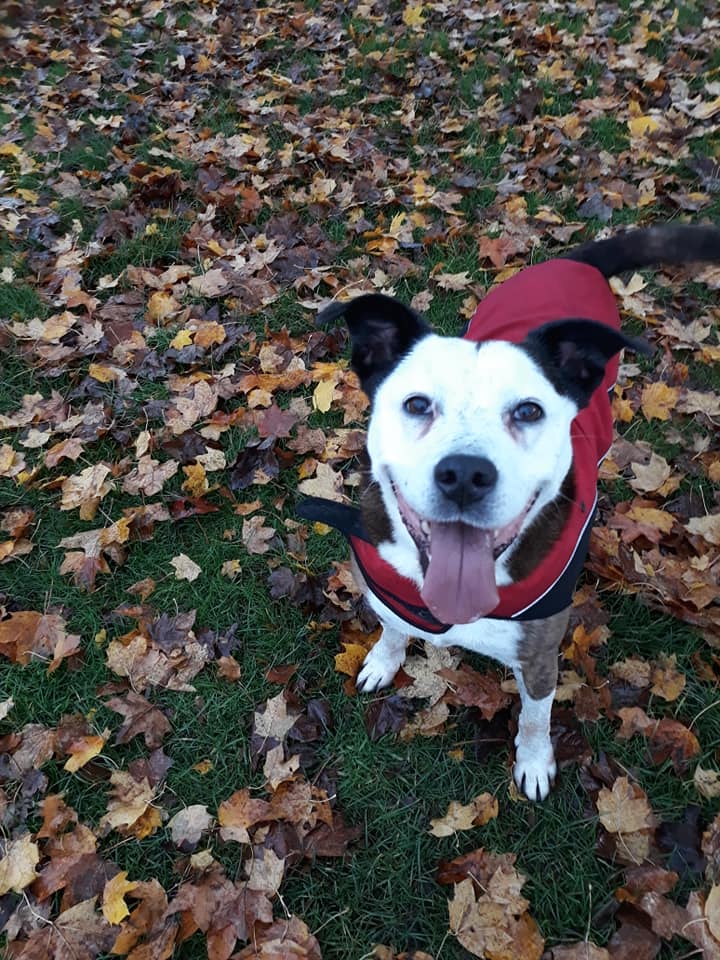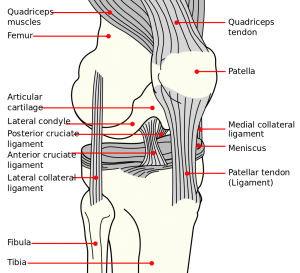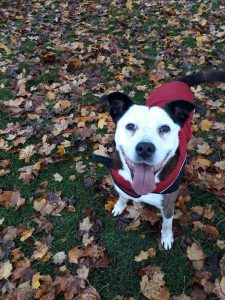Although I’m sure you’ve heard of the Cruciate Ligament, I know a lot of people aren’t exactly sure what it is or what it does. A quick check on Wiki says “Cruciate ligaments (also cruciform ligaments) are pairs of ligaments arranged like a letter X.[1] They occur in several joints of the body, such as the knee joint and the atlanto-axial joint. In a fashion similar to the cords in a toy Jacob’s ladder, the crossed ligaments stabilize the joint while allowing a very large range of motion.”
So that’s the medical “blurb” …. but I wanted to show you the REAL LIFE side of a cruciate ligament injury. If this should ever happen to your dog, what’s in store for him and you? What does the recovery of this injury look like? Well, a lovely friend of mine has just gone through this massive chapter with her beautiful dog Fergus so who better to explain it to you from a very personal standpoint? Judi, it’s over to you …. and THANK YOU for taking the time to share your experience with us all.
Meet Fergus, a fit 10 year old Staffie cross with a lust for life and energy to match. One day we went for a run he lay down and waited to have his lead on to go home, when he stood up he was on 3 legs. I rested him for 5 days and when there was no improvement we went to see the vet. As Fergus was showing no obvious signs of pain, the vet prescribed a further 5 days of total rest and Rimadyl (a non-steroidal anti-inflammatory drug). When there was still no improvement, Fergus had X Ray’s. The results were not good – he had damaged his cruciate ligament and torn his meniscus. The vet asked what I wanted to do. It was an easy decision and my reply was simply “fix my Wonky Donkey”. 2 days later he went in for his operation.
The specialist, Mike Guilliard, explained the procedure and showed me X Ray’s of the titanium cage he was going to insert once he had removed a section of bone from Ferg’s leg. He also planned to realign his knee joint so all impact in the future would go through his foot rather than his knee. This all meant it would be a long-term fix.
When I collected Fergus I got the schedule of recovery. To say I was shocked was an understatement:
1) Total crate rest for 15 days only being allowed out to toilet on the lead.
2) After 15 days he was allowed 5 minute slow walks on the lead twice a day, then back in his crate.
3) 6 weeks in, he was allowed out of his crate for short periods, but only between 2 rooms and no stairs. Toileting was still to be done on the lead.
4) Exercise would slowly be increased each week and by 4 months he would be allowed off his lead, for 2 minutes only, and he would not have to be crated any more.
5) No play with toys or dogs would be allowed for a minimum of 4 months.
6) During the last 2 months of his recovery period, off-lead exercise would gradually be increased along with physio routine of walking in long grass, over gravel and up hills, to strengthen his leg.
So that was the plan …. The “Schedule of Recovery”. Pretty daunting.
Fergus needed to learn to walk on his new leg. The walks were painfully slow at first but this part was crucial to ensure that he walked properly and did not develop the habit of limping. At first it took 5 mins to make it to the end of the drive and back. Gradually, he improved and by week 6 he was raring to go. He looked fine. This was when it was so tempting to just let him off his lead to run free but, as hard as it was, we stuck to the rules and continued lead walks and crating.
3 months in I was exhausted, emotionally and physically. I work split shifts with early starts meaning some days I was up and out at 5.30am with him in all weathers. I have another dog who had to be walked separately for 4 months. I was doing 5/6 dog walks a day, visits to the vets for check-ups and laser treatment between shifts at work. At this point I cried, I seriously thought, “I can’t do this”. I had a long hard think “do I just take the easy option, walk the dogs together and let him off-lead, or do I do the right thing?” He still did an occasional skip on his leg meaning more work was needed to teach him to walk properly. He still had new bone that needed to be fully formed and have the time to harden. He still had muscles that needed to be built up. He had been through so much I owed it to him to do it RIGHT.
We made it to the finish line and 6 months later he was fully fixed. Following the recovery schedule to the letter means that Fergus now walks and runs with a perfect gait, his leg is strong and he has the life he had before this all began.
But what if I hadn’t followed the recovery schedule?
He could’ve developed a permanent limp because he didn’t learn to walk properly. Strained and pulled muscles could have occurred which would have set him back. There was the risk that, if he had been allowed to run before the new bone had formed and hardened, he could have split his tibia – I can only imagine what this would’ve meant!
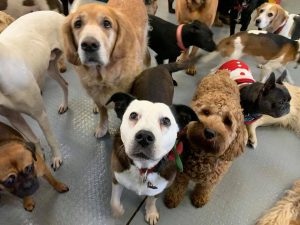
I understand how hard it can be, but it is so important to do as your vet advises. Cutting corners because it is hard on you or you feel sorry for your dog can only be detrimental in the long run. When you reach the finish line of the Road to Recovery you will be so glad that you did it RIGHT. The one thing you can’t do is turn back time, so get it right the first time, no matter how hard it might be for you and/or your dog. I would have never forgiven myself if I had caused Fergus more suffering or to not make a full recovery, just because I was emotionally and physically exhausted.
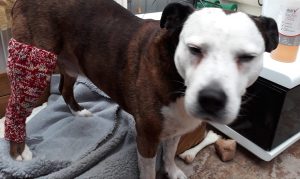
If you see the recovery period right through to the end, you and your dog will reap the benefits for years to come.
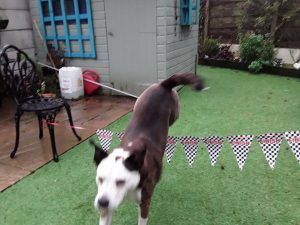
Judi … & Fergus xx

